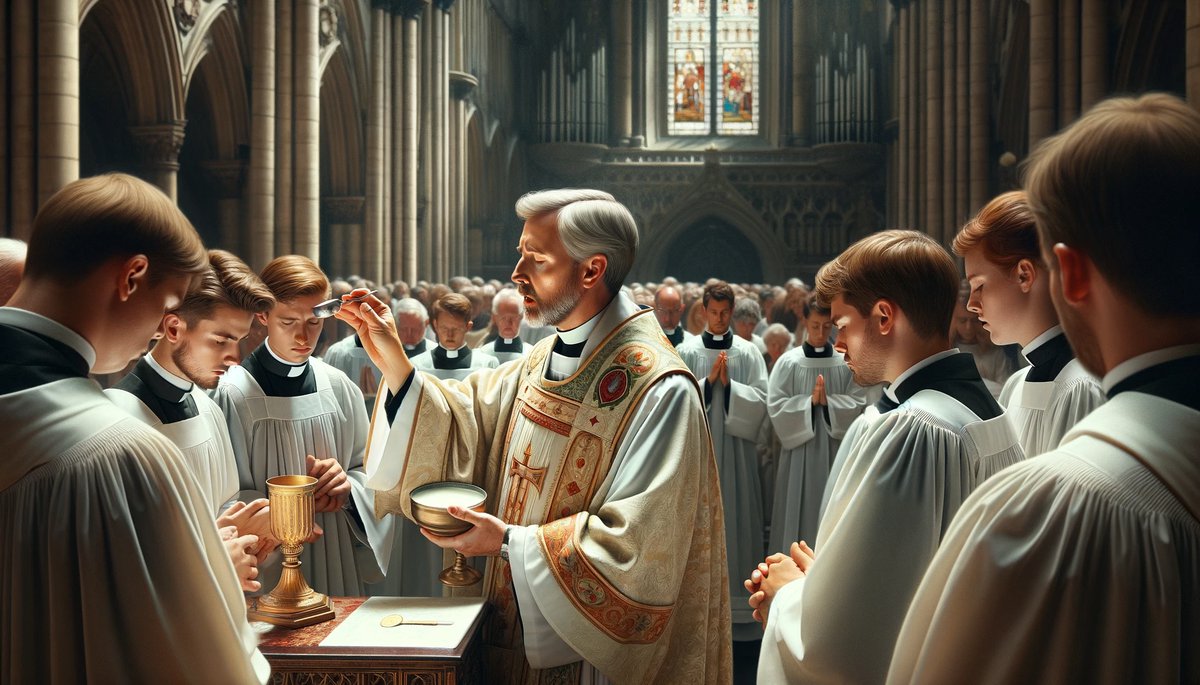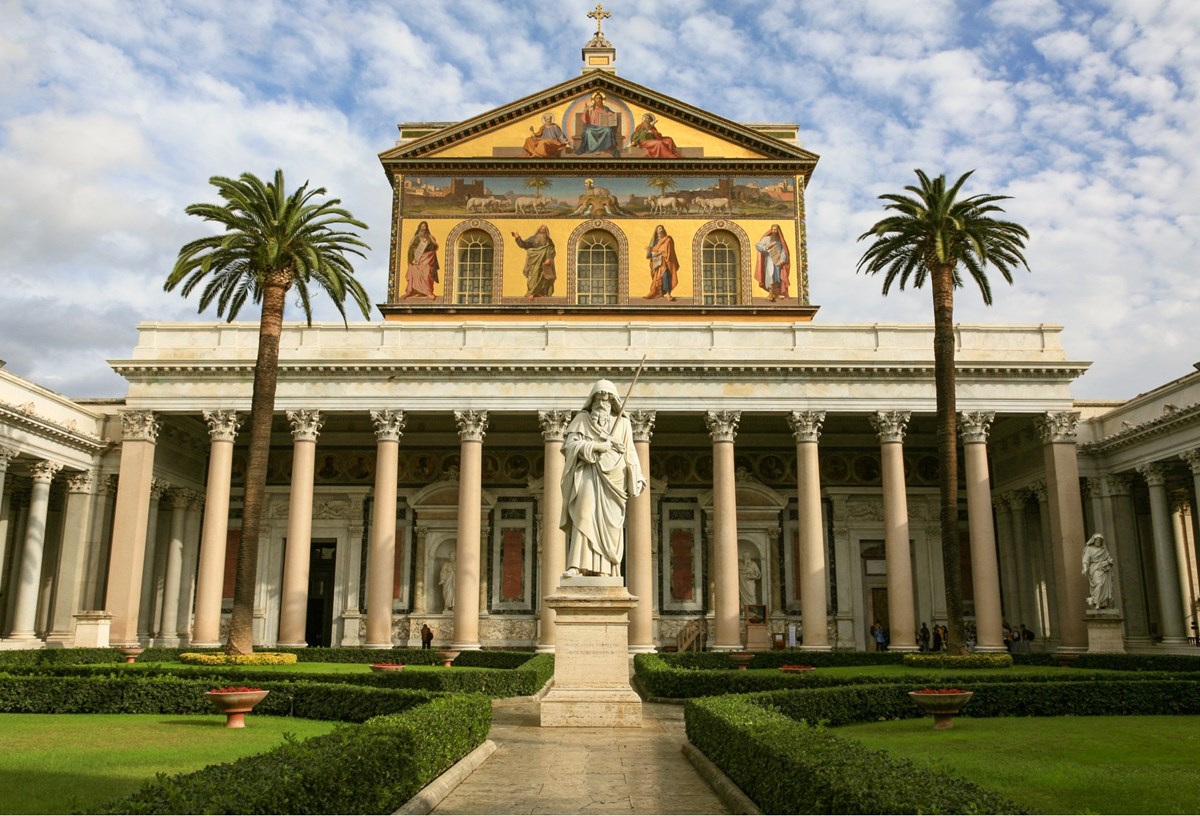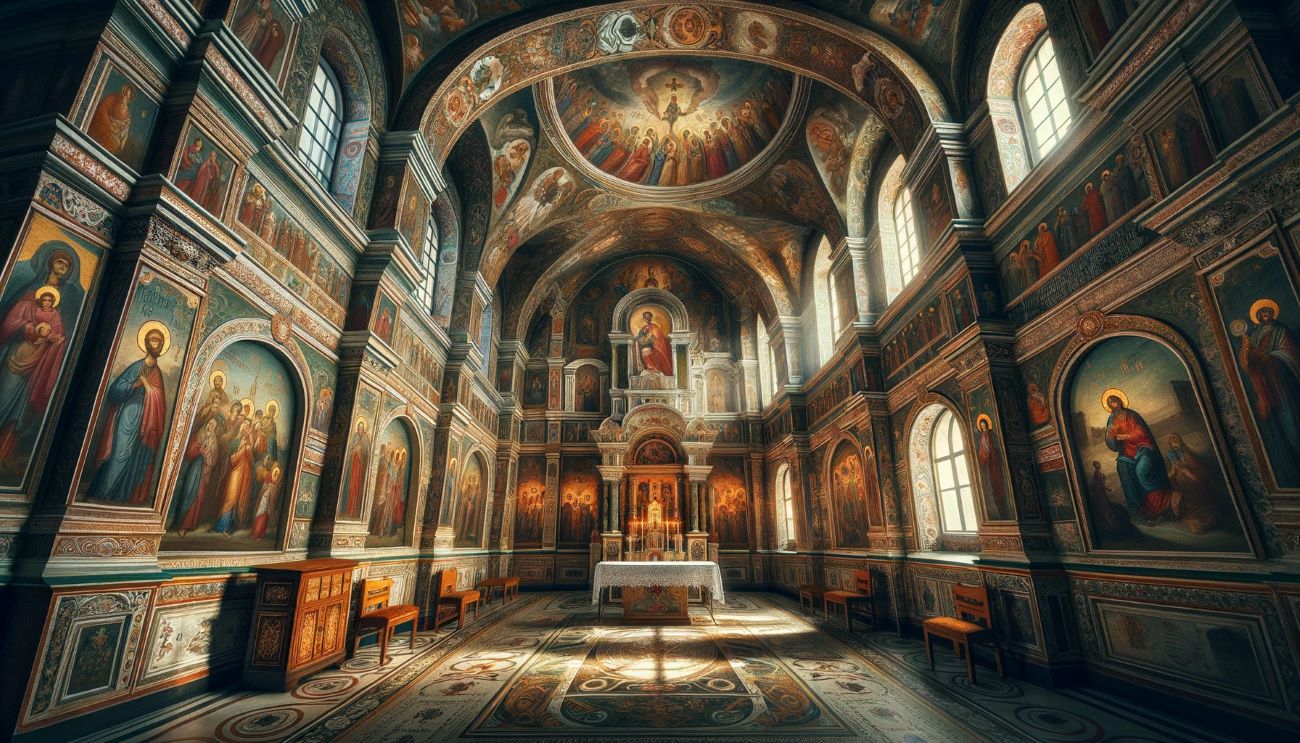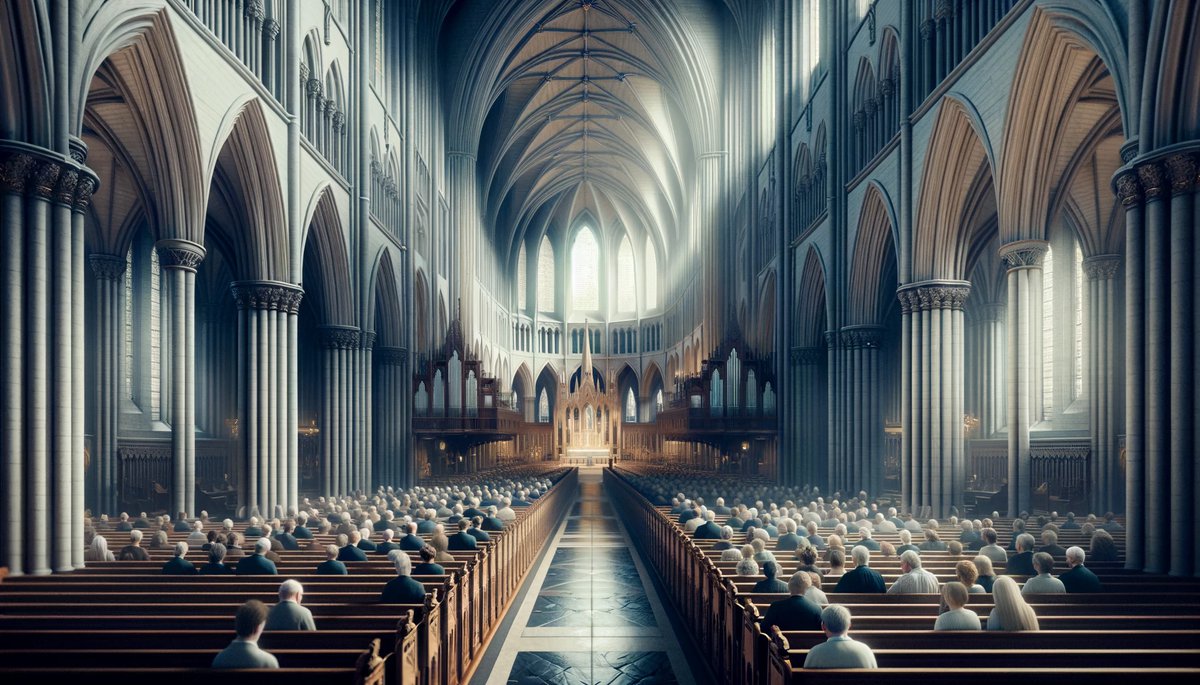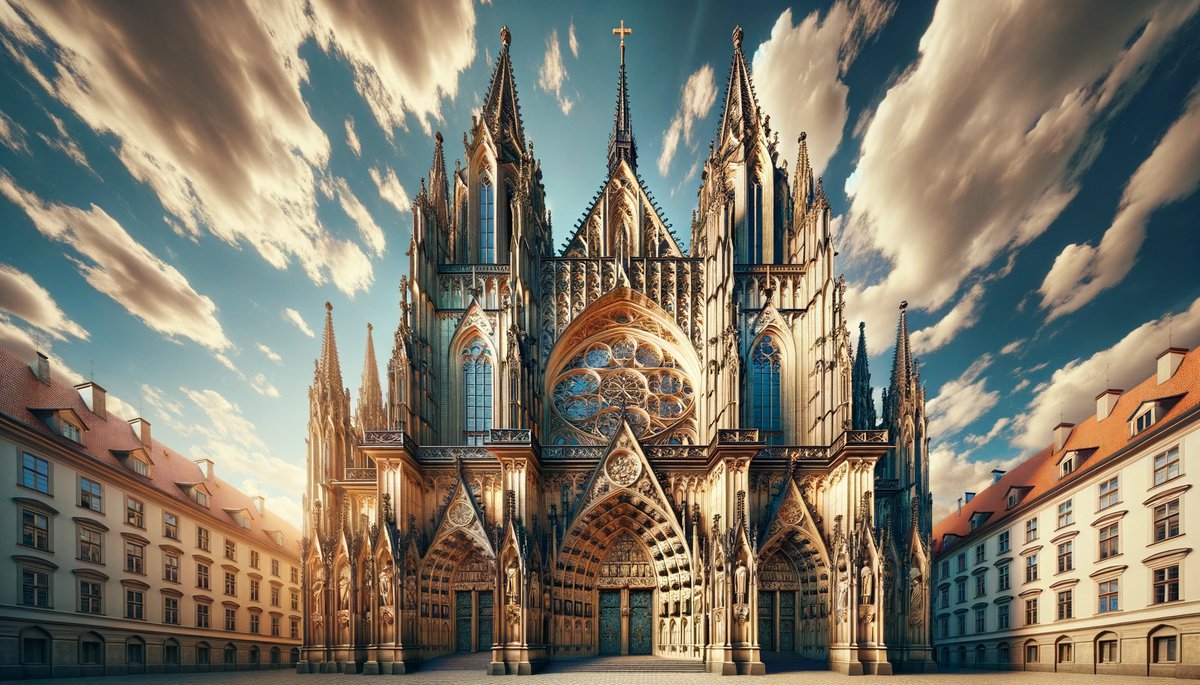Home>Arts and Culture>What Is St. Paul Cathedral
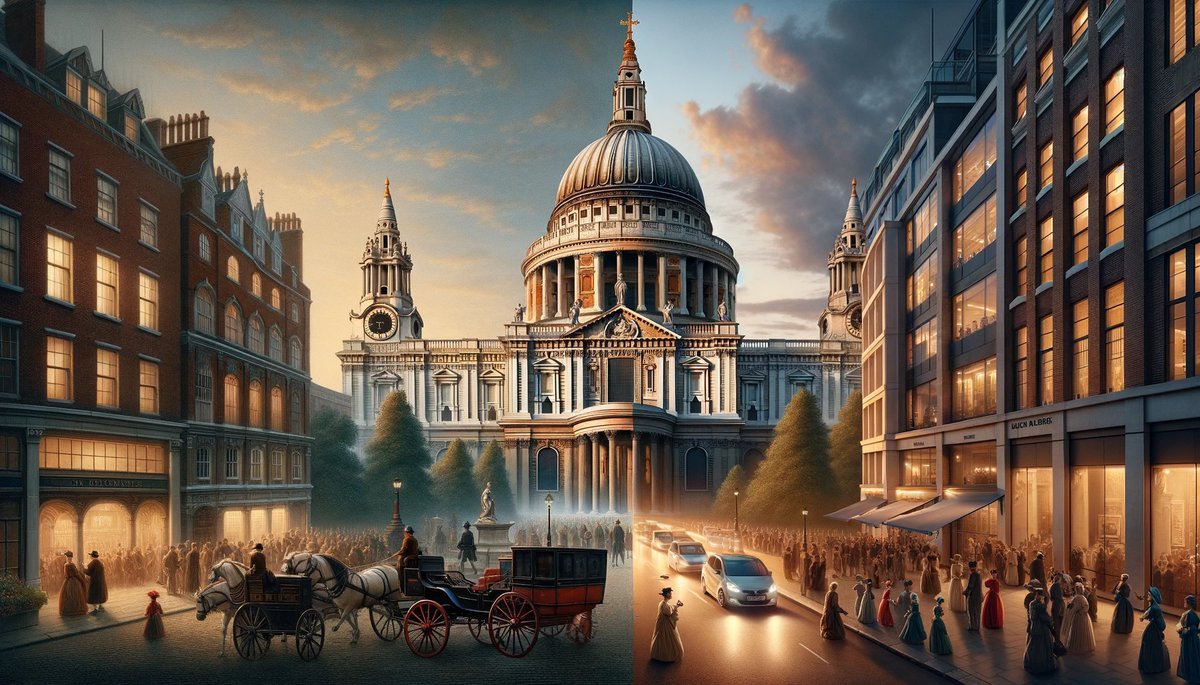

Arts and Culture
What Is St. Paul Cathedral
Published: February 17, 2024
Ericka Andersen, an editor at Christian.net, expertly merges digital strategy with content creation, focusing on faith and societal issues. Her communication skills enhance the platform's engaging narratives, fostering meaningful dialogue on belief's impact on society.
Discover the rich history and stunning architecture of St. Paul Cathedral, a must-see destination for arts and culture enthusiasts. Explore its beauty and significance today!
(Many of the links in this article redirect to a specific reviewed product. Your purchase of these products through affiliate links helps to generate commission for Christian.net, at no extra cost. Learn more)
Table of Contents
Introduction
St. Paul's Cathedral stands as a timeless symbol of architectural grandeur and spiritual significance. This magnificent structure, located in the heart of London, has captivated the hearts and minds of visitors for centuries. Its awe-inspiring presence and rich history make it a must-see destination for tourists and a revered place of worship for the faithful.
The cathedral's imposing dome, which dominates the London skyline, serves as a beacon of hope and inspiration. As visitors approach its grand entrance, they are greeted by the resplendent facade, adorned with intricate carvings and majestic columns. The sheer scale and intricate details of the architecture are a testament to the skill and artistry of the craftsmen who brought Sir Christopher Wren's vision to life.
Beyond its architectural splendor, St. Paul's Cathedral holds a profound cultural and historical significance. It has borne witness to pivotal moments in British history, from royal weddings and state funerals to national commemorations. The echoes of these events resonate within its hallowed walls, creating a palpable connection to the past.
For worshippers and visitors alike, St. Paul's Cathedral offers a sanctuary of tranquility and reflection. The ethereal light filtering through its stained glass windows, the harmonious notes of the organ reverberating through the nave, and the timeless beauty of its interior all contribute to an atmosphere of reverence and contemplation.
In the following sections, we will delve into the captivating history, awe-inspiring architecture, and enduring significance of St. Paul's Cathedral. Join us on a journey through time and space as we unravel the mysteries and marvels of this iconic landmark.
Read more: What Style Is St. Paul’s Cathedral
History of St. Paul Cathedral
St. Paul's Cathedral has a storied past that intertwines with the fabric of British history. The origins of this iconic structure can be traced back to the 7th century when a modest church dedicated to St. Paul was first established on the site. However, it was not until the Great Fire of London in 1666 that the need for a new cathedral became apparent. The devastating blaze ravaged the city, leaving in its wake a landscape of charred ruins, including the old St. Paul's Cathedral.
In the aftermath of the fire, Sir Christopher Wren, a renowned architect, was commissioned to design and oversee the construction of a new cathedral. Wren's vision was nothing short of revolutionary, as he sought to create a structure that would not only serve as a place of worship but also stand as a testament to the resilience and ingenuity of the city. The construction of St. Paul's Cathedral spanned over four decades, with the final touches completed in 1710.
Throughout its existence, St. Paul's Cathedral has been a silent witness to pivotal moments in British history. It has hosted numerous state occasions, including the funerals of distinguished figures such as Sir Winston Churchill and the wedding of Prince Charles and Lady Diana. The cathedral's enduring presence has made it a symbol of national unity and resilience, embodying the spirit of the British people through times of triumph and tribulation.
The cathedral's historical significance extends beyond its role as a venue for grand events. It has been a focal point for public gatherings and expressions of solidarity, particularly during times of national mourning and celebration. The iconic dome of St. Paul's Cathedral has served as a beacon of hope and a rallying point for the collective spirit of the nation.
Today, St. Paul's Cathedral stands as a testament to the enduring legacy of its rich history. Its walls echo with the whispers of centuries past, and its architecture tells a compelling tale of resilience, innovation, and unwavering faith. As visitors traverse its hallowed halls, they are enveloped in the timeless embrace of history, connecting with the narratives of generations gone by.
The history of St. Paul's Cathedral is a tapestry woven with threads of triumph and tragedy, resilience and rebirth. It stands as a living testament to the indomitable spirit of the human endeavor, a monument to the enduring power of faith, and a guardian of the collective memory of a nation.
Architecture and Design
The architecture and design of St. Paul's Cathedral are nothing short of awe-inspiring. Sir Christopher Wren's vision for this iconic structure resulted in a masterpiece that seamlessly blends grandeur, elegance, and innovation. At the heart of the cathedral's design is its magnificent dome, a marvel of engineering and aesthetics. Rising majestically above the London skyline, the dome stands as a testament to human ingenuity and artistic prowess.
The exterior of St. Paul's Cathedral is adorned with intricate carvings, majestic columns, and a striking facade that exudes timeless grandeur. The elaborate detailing reflects the Baroque style, characterized by its ornate embellishments and dramatic flourishes. As visitors approach the cathedral, they are greeted by a symphony of architectural elements that evoke a sense of reverence and wonder.
Upon entering the cathedral, one is immediately struck by the ethereal beauty of its interior. The soaring arches, elegant vaulted ceilings, and meticulously crafted mosaics create a space that is both awe-inspiring and intimate. The play of light and shadow within the nave adds a transcendent quality to the atmosphere, inviting contemplation and introspection.
The crowning jewel of St. Paul's Cathedral is undoubtedly its breathtaking dome. Rising to a height of 365 feet, it is one of the largest domes in the world and has become an iconic symbol of the London skyline. The dome's outer shell is constructed of Portland stone, while its inner framework consists of a complex network of timber and wrought iron. The Whispering Gallery, located within the dome, offers visitors a unique acoustic experience, where even the softest whisper can be heard clearly on the opposite side.
Ascending further, the Golden Gallery provides panoramic views of London, rewarding those who make the journey with a breathtaking vista of the city below. The intricate geometric patterns and ornate decorations adorning the interior of the dome showcase the skill and artistry of the craftsmen who brought Wren's vision to life.
St. Paul's Cathedral stands as a testament to the harmonious fusion of art and engineering, a timeless masterpiece that continues to inspire and captivate all who behold it. Its architecture and design embody the spirit of innovation and creativity, transcending time and leaving an indelible mark on the world of architectural excellence.
Significance and Importance
St. Paul's Cathedral holds profound significance and enduring importance on multiple levels, encompassing its cultural, historical, and spiritual impact. As an architectural marvel, it stands as a testament to human ingenuity and artistic expression, captivating the imagination of visitors from around the world. Its iconic dome, soaring above the London skyline, serves as a symbol of resilience and hope, embodying the spirit of a nation that has withstood the test of time.
From a historical perspective, St. Paul's Cathedral has been intricately woven into the fabric of British heritage. It has borne witness to pivotal moments in the nation's history, serving as a backdrop for royal ceremonies, state funerals, and national commemorations. The cathedral's hallowed halls have echoed with the solemnity of these events, creating a tangible link to the past and preserving the collective memory of the British people.
Moreover, St. Paul's Cathedral holds a special place in the hearts of Londoners and visitors alike, offering a sanctuary of tranquility amidst the bustling urban landscape. It provides a space for contemplation and reflection, inviting individuals to pause and connect with something greater than themselves. The cathedral's timeless beauty and serene ambiance inspire a sense of awe and reverence, fostering a profound appreciation for the intersection of faith, art, and history.
Spiritually, St. Paul's Cathedral serves as a beacon of hope and a place of worship for people of diverse backgrounds and beliefs. It stands as a testament to the enduring power of faith, offering solace and inspiration to those who seek solace within its sacred confines. The cathedral's sacred architecture and ethereal light filtering through its stained glass windows create an atmosphere conducive to introspection and spiritual renewal, inviting visitors to embark on a journey of inner contemplation and personal discovery.
In the broader cultural context, St. Paul's Cathedral represents a pinnacle of architectural achievement, drawing admirers and scholars alike to marvel at its intricate design and structural brilliance. Its influence extends beyond the realm of religious significance, permeating the realms of art, history, and human achievement. As a living testament to the resilience and creativity of the human spirit, St. Paul's Cathedral continues to inspire and uplift, leaving an indelible mark on the cultural landscape of the world.
In essence, the significance and importance of St. Paul's Cathedral transcend time and boundaries, encompassing its role as a historical landmark, a spiritual sanctuary, and a cultural treasure. Its enduring legacy continues to resonate with all who encounter its majestic presence, weaving together the threads of history, faith, and human aspiration into a tapestry of profound significance.
Current Use and Events
St. Paul's Cathedral, beyond being a historical and architectural marvel, remains a vibrant and active center for a myriad of activities, events, and religious services. The cathedral continues to serve as a place of worship for the Anglican community, hosting regular services, choral performances, and special religious observances. Its doors are open to all, welcoming visitors to partake in moments of spiritual reflection and communal prayer within its sacred confines.
In addition to its religious functions, St. Paul's Cathedral plays a pivotal role in the cultural life of London. It serves as a venue for a diverse array of events, including concerts, lectures, and art exhibitions. The cathedral's acoustics make it an ideal setting for musical performances, with its soaring arches and reverberant spaces lending a transcendent quality to the music that fills its hallowed halls. From classical recitals to contemporary compositions, the cathedral's events calendar showcases a rich tapestry of musical expressions that resonate within its sacred walls.
Furthermore, St. Paul's Cathedral stands as a beacon of education and enlightenment, offering guided tours and educational programs that provide insight into its history, architecture, and cultural significance. Visitors have the opportunity to delve into the depths of the cathedral's past, gaining a deeper understanding of its enduring legacy and the stories embedded within its walls. Educational initiatives aimed at students and scholars contribute to the cathedral's role as a living repository of knowledge and historical insight.
The cathedral also serves as a platform for national commemorations and celebrations, hosting ceremonies that unite the community in moments of collective reflection and remembrance. From solemn occasions of remembrance to joyous celebrations of national significance, St. Paul's Cathedral stands as a unifying symbol, bringing people together to honor shared experiences and commemorate pivotal events in the nation's history.
In essence, St. Paul's Cathedral remains a dynamic and multifaceted institution, embracing its role as a place of worship, cultural venue, educational center, and a focal point for communal gatherings. Its ability to adapt to the evolving needs of society while preserving its timeless traditions ensures that it continues to be a vital and cherished institution, enriching the lives of all who cross its threshold.
Read more: What To Do Around St. Paul’s Cathedral
Conclusion
In conclusion, St. Paul's Cathedral stands as a testament to the enduring legacy of human creativity, resilience, and spiritual aspiration. From its humble origins to its current status as a global icon, the cathedral has woven itself into the fabric of British history and culture, leaving an indelible mark on the hearts and minds of all who encounter its majestic presence.
The cathedral's rich history, spanning centuries of triumphs and tribulations, serves as a poignant reminder of the enduring spirit of the human endeavor. It has withstood the ravages of time and nature, emerging as a symbol of strength and continuity in the face of adversity. Its architectural grandeur, meticulously crafted design, and awe-inspiring dome stand as a testament to the heights of human ingenuity and artistic expression.
Beyond its physical attributes, St. Paul's Cathedral holds profound significance as a place of spiritual solace and communal gathering. It has provided a sanctuary for worship, reflection, and celebration, fostering a sense of unity and shared purpose among its visitors. The cathedral's role as a cultural venue, educational center, and a platform for national events underscores its enduring relevance in the modern world.
As the sun sets over the London skyline, casting a golden glow upon the cathedral's timeless facade, one cannot help but be captivated by the enduring allure of St. Paul's Cathedral. It stands as a living testament to the power of faith, the beauty of art, and the resilience of the human spirit. Its legacy transcends time and borders, inviting all who cross its threshold to embark on a journey through history, spirituality, and the boundless depths of human achievement.
In the heart of London, amidst the bustling urban landscape, St. Paul's Cathedral stands as a beacon of hope, a guardian of heritage, and a testament to the enduring power of human creativity and aspiration. It beckons to all, inviting them to partake in its timeless narrative, to find solace in its sacred embrace, and to marvel at the enduring legacy of one of the world's most cherished architectural marvels.
